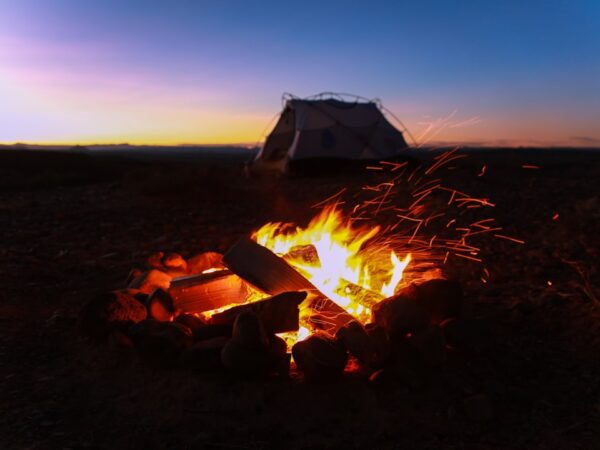
Climbing the Dolomites: Exploring Via Ferratas
Via Ferratas, which means “iron path” in Italian, are a type of climbing route that involves a combination of hiking and rock climbing. They consist of a series of metal cables, ladders, and steps that are fixed to the rock face, allowing climbers to navigate through steep and exposed terrain with the aid of safety equipment. Via Ferratas were originally developed in the Dolomites, a mountain range located in northeastern Italy, during World War I as a means for soldiers to traverse the rugged landscape. Today, Via Ferratas have become increasingly popular among outdoor enthusiasts seeking an adrenaline-pumping adventure.
The history of Via Ferratas dates back to the early 20th century when they were first used by soldiers during World War
The Dolomites, with their jagged peaks and challenging terrain, provided an ideal setting for military operations. Soldiers needed a way to move quickly and safely through the mountains, so they began installing iron cables and ladders to aid their ascent. After the war, these routes were opened up to the public and became popular among climbers and hikers.
In recent years, Via Ferratas have gained popularity worldwide as more people seek out unique and thrilling outdoor experiences. The appeal of Via Ferratas lies in their accessibility – they offer a way for people with little or no climbing experience to safely navigate through challenging terrain. Unlike traditional rock climbing, Via Ferratas require minimal technical skills and equipment, making them suitable for a wide range of fitness levels. Additionally, the combination of hiking and climbing allows climbers to experience breathtaking views and explore remote areas that would otherwise be inaccessible.
Key Takeaways
- Via Ferratas are climbing routes that use fixed cables, ladders, and bridges to aid climbers.
- The Dolomites in Italy are a popular destination for Via Ferrata climbing due to their stunning scenery and challenging routes.
- Essential gear for Via Ferrata climbing includes a helmet, harness, Via Ferrata set, and appropriate footwear.
- Safety tips for climbing the Dolomites include checking weather conditions, staying on the marked route, and using proper technique.
- Some of the best Via Ferrata routes in the Dolomites include the Tridentina, the Tomaselli, and the Piz da Lech.
The Dolomites: A Climber’s Paradise
The Dolomites, located in northeastern Italy, are widely regarded as one of the world’s premier climbing destinations. This mountain range is known for its dramatic limestone peaks, vertical walls, and stunning alpine scenery. The Dolomites offer a wide range of climbing opportunities, from easy Via Ferratas suitable for beginners to challenging routes that will test even the most experienced climbers.
The Dolomites have long been a popular destination for climbers due to their unique geology and landscape. The region is characterized by towering limestone cliffs, deep valleys, and rugged mountain peaks. The rock in the Dolomites is known for its excellent quality, providing climbers with solid and reliable holds. The combination of challenging routes and breathtaking views makes the Dolomites a true climber’s paradise.
One of the main attractions of climbing in the Dolomites is the variety of routes available. Whether you’re a beginner looking for an introduction to Via Ferrata climbing or an experienced climber seeking a challenge, there is something for everyone in the Dolomites. The region offers routes of varying difficulty levels, allowing climbers to progress at their own pace and push their limits.
Essential Gear for Via Ferrata Climbing
| Essential Gear for Via Ferrata Climbing | Description |
|---|---|
| Helmet | A protective headgear that can prevent head injuries from falling rocks or accidental falls. |
| Via Ferrata Set | A specialized set of equipment that includes a shock-absorbing lanyard, carabiners, and a harness. It is designed to keep the climber attached to the cable at all times. |
| Climbing Harness | A safety device that secures the climber to the via ferrata set and provides support during the climb. |
| Gloves | Protective gloves that provide grip and prevent blisters during the climb. |
| Climbing Shoes | Specialized shoes with a sticky rubber sole that provides grip on the rock surface. |
| Sunscreen | Protects the skin from harmful UV rays during the climb. |
| Sunglasses | Protects the eyes from glare and debris during the climb. |
| Water Bottle | Keeps the climber hydrated during the climb. |
| Backpack | A lightweight backpack that can carry all the necessary gear and supplies for the climb. |
When it comes to Via Ferrata climbing, having the right gear is essential for your safety and enjoyment. Here are some of the essential items you’ll need:
1. Helmet: A helmet is crucial for protecting your head from falling rocks or other debris. Make sure to choose a helmet that fits properly and provides adequate protection.
2. Harness: A harness is used to attach yourself to the Via Ferrata cable system. Look for a harness that is comfortable and adjustable, allowing you to move freely while still providing support.
3. Via Ferrata Set: A Via Ferrata set consists of two lanyards with carabiners that attach to the cable system. This set allows you to move along the route while always being securely attached.
4. Climbing Shoes: Proper footwear is essential for climbing in the Dolomites. Look for climbing shoes that provide good grip on rock surfaces and offer support and protection for your feet.
5. Gloves: Gloves are recommended to protect your hands from sharp rocks and to provide a better grip on the cables. Choose gloves that are durable and offer good dexterity.
6. Other recommended gear: Other items that may be useful include a backpack to carry water and snacks, a headlamp for early morning or late evening climbs, and a first aid kit in case of emergencies.
It’s important to invest in high-quality gear and ensure that it is properly maintained. Regularly inspect your gear for any signs of wear or damage, and replace any items that are no longer in good condition.
Safety Tips for Climbing the Dolomites
Safety should always be the top priority when climbing in the Dolomites. Here are some important safety tips to keep in mind:
1. Follow safety guidelines: Before embarking on a Via Ferrata climb, familiarize yourself with the route and any specific safety guidelines or regulations. Pay attention to any warnings or restrictions, and always follow the instructions provided.
2. Consider the weather: Weather conditions can change rapidly in the mountains, so it’s important to check the forecast before heading out. Avoid climbing during storms or when there is a risk of lightning. Be prepared for changing weather conditions by bringing appropriate clothing and equipment.
3. Use gear properly: Make sure you know how to properly use your gear before starting a climb. Practice attaching and detaching your Via Ferrata set, and ensure that all carabiners are securely locked. Double-check your harness and helmet to ensure they are properly fitted.
4. Know emergency procedures: Familiarize yourself with emergency procedures before starting a climb. Know how to call for help in case of an emergency, and have a plan in place for evacuating the route if necessary. It’s also a good idea to carry a whistle or other signaling device in case you need to attract attention.
5. Climb within your limits: It’s important to know your own abilities and limitations when climbing in the Dolomites. Start with easier routes and gradually progress to more challenging ones as you gain experience and confidence. Don’t push yourself beyond your comfort zone, and always listen to your body.
By following these safety tips, you can minimize the risks associated with Via Ferrata climbing and ensure a safe and enjoyable experience in the Dolomites.
Best Via Ferrata Routes in the Dolomites
The Dolomites offer a wide range of Via Ferrata routes, each with its own unique challenges and rewards. Here are some of the best routes to consider:
1. Via delle Bocchette, Brenta Group: This route is considered one of the most classic and challenging in the Dolomites. It traverses the Brenta Group, a range known for its rugged peaks and exposed terrain. The route offers breathtaking views of the surrounding mountains and requires a high level of fitness and technical skill.
2. Via Ferrata Tridentina, Sella Group: This route is located in the heart of the Dolomites and offers stunning views of the Sella Group. It is a challenging route that requires good physical fitness and technical ability. The highlight of this route is the exposed traverse along a narrow ledge, offering a thrilling experience for climbers.
3. Via Ferrata delle Marmolada, Marmolada: This route takes climbers to the highest peak in the Dolomites, offering panoramic views of the surrounding mountains. It is a long and demanding route that requires good physical fitness and stamina. The highlight of this route is the final section, which involves climbing up a steep snowfield to reach the summit.
These are just a few examples of the many Via Ferrata routes available in the Dolomites. Whether you’re a beginner looking for an introduction to Via Ferrata climbing or an experienced climber seeking a challenge, there is something for everyone in this stunning mountain range.
Difficulty Levels of Via Ferratas
Via Ferratas are typically graded according to their difficulty level, allowing climbers to choose routes that match their abilities and experience. The grading system varies depending on the country and region, but generally follows a similar scale. Here is an overview of the difficulty levels you may encounter when climbing Via Ferratas in the Dolomites:
1. Easy: These routes are suitable for beginners or those with little or no climbing experience. They involve easy terrain with minimal exposure and require basic fitness and technical skills.
2. Intermediate: Intermediate routes are slightly more challenging and require a higher level of fitness and technical ability. They may involve steeper sections or more exposed terrain, but are still suitable for climbers with some experience.
3. Difficult: Difficult routes are more physically demanding and technically challenging. They often involve steep and exposed sections that require good balance, strength, and endurance. These routes are recommended for experienced climbers who are comfortable with heights and have a high level of fitness.
4. Very difficult: Very difficult routes are reserved for experienced climbers who have a high level of fitness, technical skill, and mental strength. These routes often involve long and sustained sections of steep and exposed terrain, requiring advanced climbing techniques and a calm and focused mindset.
It’s important to choose a route that matches your abilities and experience level. Starting with easier routes allows you to build confidence and gain experience before progressing to more challenging ones. It’s also a good idea to climb with a partner or join a guided tour if you’re new to Via Ferrata climbing or unfamiliar with the area.
How to Prepare Physically and Mentally for Via Ferrata Climbing
Preparing physically and mentally for Via Ferrata climbing is essential to ensure a safe and enjoyable experience in the Dolomites. Here are some tips to help you get ready:
1. Physical training recommendations: Via Ferrata climbing requires a good level of fitness, as it involves hiking and climbing in challenging terrain. To prepare, incorporate cardiovascular exercises such as running or cycling into your routine to improve your endurance. Strength training exercises, such as weightlifting or bodyweight exercises, can help build the necessary strength and stamina for climbing. Focus on exercises that target the muscles used in climbing, such as the arms, shoulders, core, and legs.
2. Mental preparation tips: Climbing in the Dolomites can be mentally challenging, especially when faced with exposed terrain or difficult sections. To prepare mentally, visualize yourself successfully completing the climb and overcoming any obstacles you may encounter. Practice deep breathing and relaxation techniques to help calm your mind and stay focused during the climb. It can also be helpful to climb with a partner or join a guided tour to provide support and encouragement.
3. Importance of acclimatization: The Dolomites are located at high altitude, and climbing at altitude can be physically demanding. It’s important to acclimatize to the altitude before attempting any strenuous climbs. Spend a few days at a lower elevation to allow your body to adjust to the thinner air. Stay hydrated and avoid alcohol and caffeine, as these can exacerbate the effects of altitude sickness.
By preparing physically and mentally for Via Ferrata climbing, you can increase your chances of success and have a more enjoyable experience in the Dolomites.
Accommodation Options in the Dolomites for Climbers
The Dolomites offer a range of accommodation options for climbers, from luxury hotels to mountain huts. Here are some of the options available:
1. Hotels: There are numerous hotels located throughout the Dolomites that cater to climbers and outdoor enthusiasts. These hotels offer comfortable accommodations, amenities such as restaurants and spas, and easy access to popular climbing routes. Staying in a hotel provides a convenient and comfortable base for your climbing adventures.
2. Mountain huts: Mountain huts, also known as rifugios, are a popular option for climbers in the Dolomites. These huts are located in remote areas and offer basic accommodations, such as dormitory-style rooms and shared bathrooms. Staying in a mountain hut allows you to immerse yourself in the mountain environment and provides easy access to climbing routes.
3. Camping: For those who prefer a more rustic experience, camping is an option in the Dolomites. There are several campsites located throughout the region that offer facilities such as showers and toilets. Camping allows you to be closer to nature and provides a more budget-friendly accommodation option.
Each accommodation option has its own pros and cons, so it’s important to consider your preferences and needs when choosing where to stay. If you’re planning to climb multiple routes in different areas of the Dolomites, it may be beneficial to stay in different accommodations to minimize travel time.
Best Times to Climb the Dolomites
The best time to climb in the Dolomites depends on several factors, including weather conditions, route accessibility, and personal preferences. Here are some considerations to keep in mind:
1. Weather patterns: The weather in the Dolomites can be unpredictable, with rapid changes in temperature and conditions. The summer months of June to September generally offer the most stable weather, with warm temperatures and less chance of rain or snow. However, it’s still important to check the forecast before heading out, as storms can still occur.
2. Peak climbing seasons: The peak climbing seasons in the Dolomites are typically during the summer months when the weather is most favorable. During this time, popular routes can be crowded, especially on weekends and holidays. If you prefer quieter climbs, consider visiting during the shoulder seasons of spring or fall when there are fewer tourists.
3. Off-season considerations: Climbing in the Dolomites during the off-season can offer a unique and rewarding experience. The winter months bring snow and ice, creating opportunities for ice climbing and ski mountaineering. However, climbing during the winter requires specialized equipment and skills, so it’s important to be properly prepared.
Ultimately, the best time to climb in the Dolomites depends on your personal preferences and goals. Consider factors such as weather, route availability, and crowd levels when planning your trip.
Why Climbing Via Ferratas in the Dolomites is an Unforgettable Experience
Climbing Via Ferratas in the Dolomites offers a unique and unforgettable experience for outdoor enthusiasts. The combination of hiking and climbing allows you to explore remote and stunningly beautiful areas that would otherwise be inaccessible. The Dolomites’ rugged peaks, vertical walls, and breathtaking alpine scenery provide the perfect backdrop for an adrenaline-pumping adventure.
Whether you’re a beginner looking for an introduction to Via Ferrata climbing or an experienced climber seeking a challenge, the Dolomites offer a wide range of routes to suit all abilities. From easy routes that provide a gentle introduction to climbing to challenging routes that will test your skills and endurance, there is something for everyone in this stunning mountain range.
By following safety guidelines, properly using gear, and preparing physically and mentally, you can ensure a safe and enjoyable experience in the Dolomites. Whether you choose to stay in a hotel, mountain hut, or campsite, there are a few key things to keep in mind. First, make sure to research and book your accommodations in advance, as the Dolomites can be a popular destination. Additionally, familiarize yourself with the local regulations and guidelines for camping, hiking, and climbing in the area. This will help you understand any restrictions or special considerations you need to be aware of. Finally, pack appropriately for the weather conditions and activities you plan to engage in. This includes proper clothing, footwear, and equipment such as hiking poles or climbing gear. By taking these steps, you can have a safe and enjoyable time exploring the stunning landscapes of the Dolomites.
FAQs
What are via ferratas?
Via ferratas are climbing routes that are equipped with fixed cables, ladders, and bridges to aid climbers in their ascent. They were originally developed in the Dolomites during World War I to help soldiers move through the mountains.
What are the Dolomites?
The Dolomites are a mountain range located in northeastern Italy. They are known for their distinctive rock formations and are a popular destination for climbers and hikers.
What is the difficulty level of climbing via ferratas in the Dolomites?
The difficulty level of via ferratas in the Dolomites varies from easy to extremely difficult. There are routes suitable for beginners as well as experienced climbers.
What equipment do I need to climb via ferratas in the Dolomites?
You will need a climbing harness, helmet, via ferrata set (which includes a shock-absorbing lanyard and carabiners), and appropriate footwear. It is also recommended to bring gloves and a backpack with water and snacks.
Do I need to be an experienced climber to climb via ferratas in the Dolomites?
While prior climbing experience is helpful, it is not necessary to be an experienced climber to climb via ferratas in the Dolomites. However, it is important to have a basic level of fitness and comfort with heights.
What is the best time of year to climb via ferratas in the Dolomites?
The best time to climb via ferratas in the Dolomites is from June to September, when the weather is generally mild and the routes are free of snow and ice. However, it is important to check weather conditions before embarking on any climb.
Are there guided tours available for climbing via ferratas in the Dolomites?
Yes, there are many guided tours available for climbing via ferratas in the Dolomites. These tours are led by experienced guides who can provide instruction and ensure safety on the routes.


















